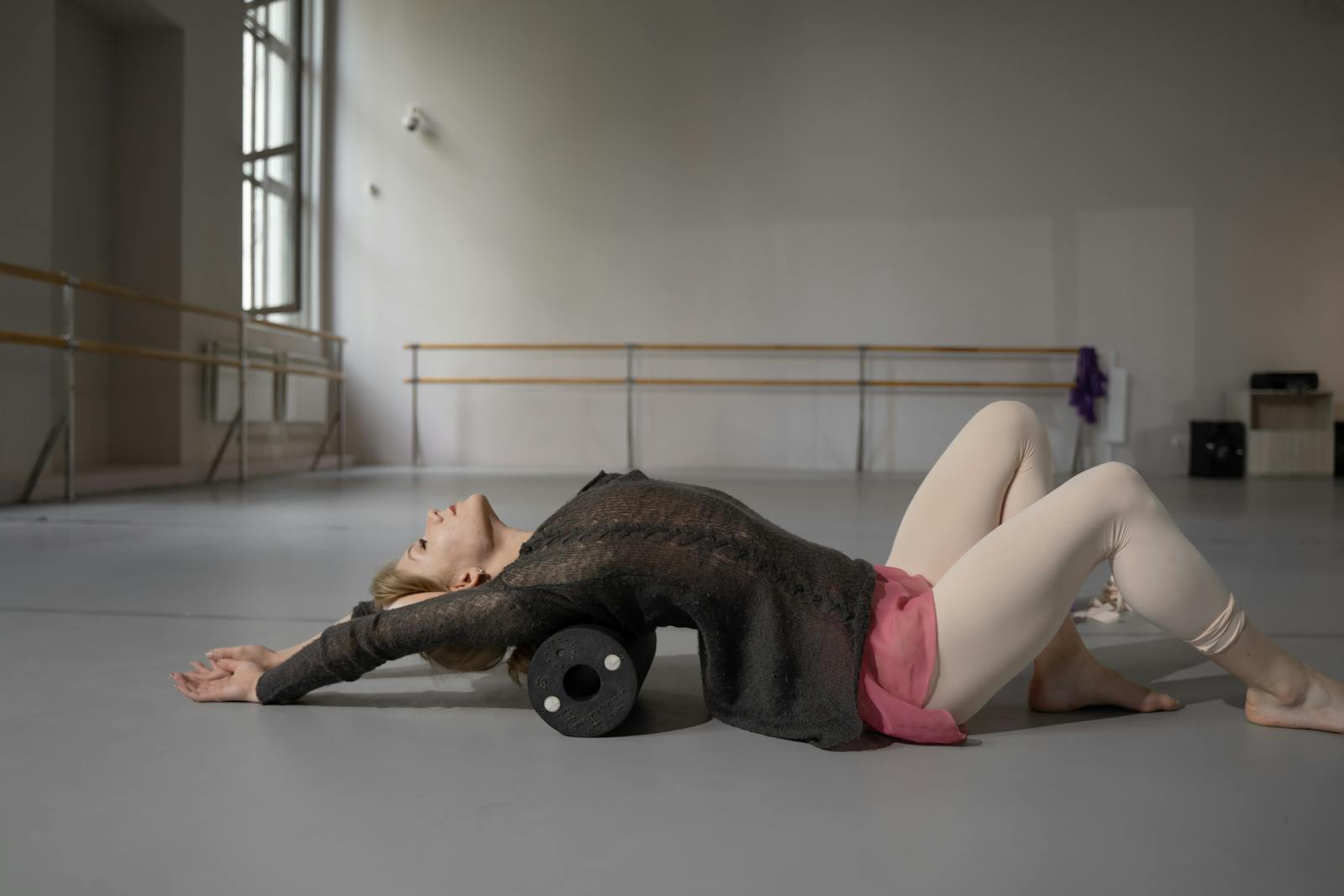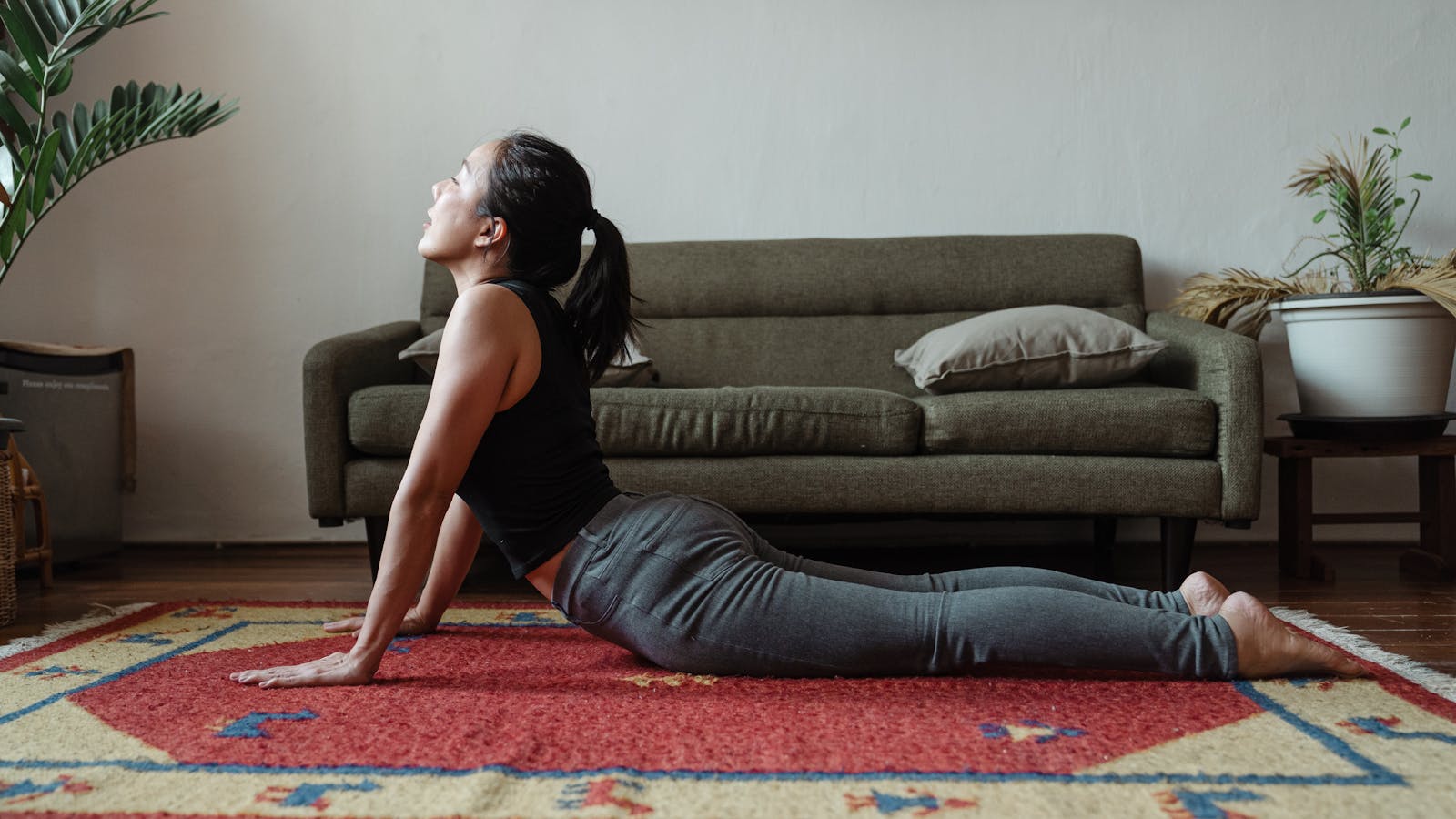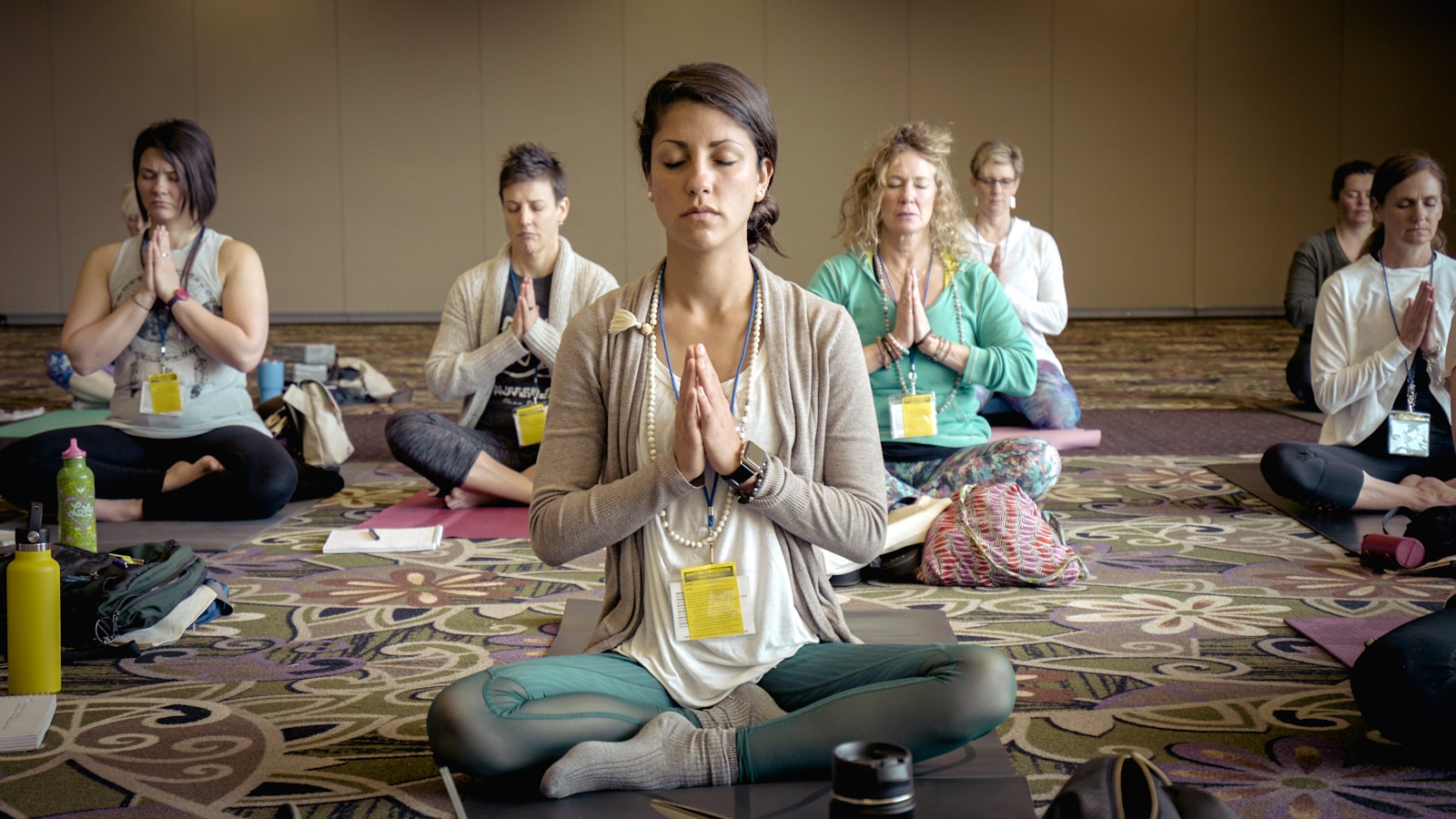The interplay between Yoga and Pilates in bolstering spine health is a significant area of exploration in the domain of holistic wellness. These disciplines, with their distinct approaches to flexibility, strengthening, and controlled movements, have been known to alleviate spinal discomfort and enhance overall posture. However, the underlying mechanisms through which they interact with our spine, and the potential implications for those suffering from chronic back issues, are worth a closer inspection. This invites an enlightening discourse on the merits of integrating Yoga and Pilates into our routines for improved spine health.
Understanding Spine Health
The foundation of overall well-being, spine health, is an intricate interplay of various factors such as posture, physical activity, and lifestyle habits, necessitating a thorough understanding for best care and maintenance. The spine is a complex structure that supports the body and facilitates movement. Spine anatomy encompasses the vertebrae, discs, nerves, and muscles, each playing an important role in maintaining spinal health and function.
Degenerative disorders, often an inevitable aspect of aging, greatly impact spine health. These disorders include conditions such as osteoarthritis and disc degeneration, which lead to pain and restricted movement. Proper understanding of spine anatomy can contribute to the prevention and management of these disorders.
Poor posture and sedentary lifestyles are common contributors to spinal issues. Regular physical activity, proper ergonomics, and a balanced diet can support spine health and mitigate the effects of degenerative disorders. Understanding the correlation between these lifestyle habits and spine health is essential.
Overview of Yoga and Pilates
Exploring the domains of physical fitness, Yoga and Pilates emerge as two holistic approaches that not only promote overall well-being but also contribute significantly to spine health. Both disciplines incorporate movements and postures that strengthen the body, enhance stability, and improve posture, all of which are important for maintaining a healthy spine.
Tracing Yoga’s origins back to ancient India, this practice was developed as a means to achieve harmony between the mind, body, and spirit. The postures, also known as ‘asanas’, were designed to improve flexibility, strength, and balance, while the meditative components of yoga promote mental clarity and stress reduction.
Pilates, on the other hand, has a relatively recent history. Devised by Joseph Pilates in the early 20th century, this exercise regimen was created to rehabilitate injured soldiers during World War I. Today, Pilates is recognised for its focus on core strength, including the muscles supporting the spine, thereby improving posture and alignment.
While Yoga and Pilates have different origins and philosophies, they share a common goal: to enhance physical fitness and promote a healthy lifestyle. Their specific benefits to spine health will be explored further in subsequent sections.
Improving Flexibility With Yoga
Yoga, a practice deeply rooted in ancient principles, is renowned for its potential to enhance flexibility, particularly in the context of spinal health. The discipline incorporates an array of stretching techniques, each aimed at fostering suppleness and reducing the risk of injury. Additionally, a consistent yoga routine can yield significant benefits, contributing to overall spinal flexibility and improved posture.
Stretching Techniques in Yoga
Incorporating stretching techniques into your yoga routine can greatly enhance flexibility and promote better spine health. This is achieved through careful movement and alignment, coupled with effective breathing techniques. These techniques are integral for maintaining focus, keeping the mind and body in sync, and maximizing the benefits of each stretch. Yoga equipment, such as mats, blocks, and straps, also play a significant role in facilitating these stretches. They provide support, increase reach, and help to maintain balance during poses, thereby enhancing the overall efficacy of the stretching techniques. Regular practice of these techniques can lead to improved flexibility, reduced muscle tension, and overall better spine health. However, it’s important to remember that patience and consistency are key to seeing positive results.
Yoga for Spinal Flexibility
Enhancing spinal flexibility, a crucial aspect of overall spine health, can be effectively achieved through targeted yoga practices. Specific poses and sequences work to stretch and strengthen the muscles supporting the spine, promoting ideal function and reducing the risk of injury. A key component of this is spinal alignment awareness, which yoga cultivates through mindful movement and posture. This awareness encourages the correct distribution of weight and force along the spine, helping to maintain its natural curve and flexibility. Additionally, the impact of breathing techniques in yoga cannot be understated. Deep, controlled breathing helps to release tension in the muscles surrounding the spine, thereby improving flexibility. As a low-impact, adaptable form of exercise, yoga is an excellent tool for enhancing spinal flexibility.
Benefits of Regular Yoga
Regular engagement in yoga practices offers a plethora of benefits, paramount among which is the significant improvement in flexibility, particularly in the muscles supporting the spine. Over time, regular yoga sessions can enhance spinal mobility and stability, thereby reducing the risk of spinal injuries. To supplement these physical benefits, incorporating a Yoga Diet – rich in fruits, vegetables, and whole grains – can further promote overall wellness and spine health. This balanced dietary approach fuels the body with essential nutrients needed for best flexibility and strength. Additionally, the incorporation of meditation into the yoga routine offers significant psychological benefits. Regular meditation aids in stress reduction, promoting mental clarity, and enhancing focus. Collectively, the physical and mental benefits of regular yoga contribute to improved overall spine health.
Pilates for Strengthening the Spine
One cannot underestimate the efficacy of Pilates in bolstering the strength and flexibility of the spine. With the use of Pilates equipment basics such as the reformer, Cadillac, and Wunda chair, this exercise system promotes a well-rounded body with a strong, supple spine. These apparatuses help to create resistance that engages the muscles and builds spinal strength, while also allowing for a range of motion that enhances flexibility.
Pilates drills deep into the core of the body, targeting the muscles that directly support the spine. This core stability enhancement not only fortifies the spine but also improves overall body strength and balance. The concentration on controlled, precise movements in Pilates encourages better posture and spinal alignment, reducing the risk of back pain and injury.
Moreover, Pilates exercises are adaptable to individual needs and abilities, making it a suitable option for people of all fitness levels. Regular Pilates practice can lead to a healthier, more flexible spine, reducing the risk of degenerative spinal conditions and promoting overall back health. It offers a holistic approach to spinal health, making it an invaluable addition to any fitness regimen.

Yoga and Posture Correction
Just as Pilates strengthens the spine, incorporating yoga into a fitness regimen provides a powerful tool for correcting posture and promoting spinal health. Yoga cultivates Posture Awareness, an essential aspect of maintaining the health of your spine. A common issue in modern society is the prevalence of sedentary lifestyles, which often lead to poor posture. Yoga encourages individuals to become consciously aware of their posture, helping to rectify misalignments and alleviate associated discomfort.
Yoga’s Alignment Techniques also play an important role in posture correction. These techniques involve the correct positioning of the body to promote the spine’s alignment, thus enhancing functionality and reducing the risk of injury. By regularly practicing yoga, individuals can learn to maintain proper alignment, reducing strain on the spine and promoting healthier posture.
Furthermore, the emphasis on deep, controlled breathing in yoga helps to relax the muscles supporting the spine. This relaxation can improve posture by reducing tension and enabling a more natural, upright stance. Incorporating yoga into your routine can thus not only correct posture but also foster a healthier, more mindful relationship with your spine.
Pilates: A Solution to Back Pain
While yoga offers numerous benefits for spinal health and posture, Pilates emerges as an effective solution specifically for back pain. This fitness system, developed by Joseph Pilates in the early 20th century, emphasizes controlled movements, alignment, and concentration, which can contribute greatly to alleviating back discomfort.
Pilates Equipment Use is an integral part of this methodology. Utilizing tools like the reformer, a sliding platform with springs for resistance, or the Cadillac, a type of trapeze table, can provide targeted support and resistance. This facilitates the strengthening of the body’s core muscles, including those surrounding the spine, leading to improved posture and reduced back pain.
For beginners or those wanting to deepen their understanding, Instructive Pilates Books offer a wealth of knowledge. Books like ‘Return to Life through Contrology’ by Joseph Pilates himself, or ‘The Pilates Body’ by Brooke Siler, provide detailed guidance on various Pilates exercises and principles.
Stress Relief Through Yoga
Shifting our focus to stress relief, the practice of yoga offers a myriad of benefits. The integration of specific yoga poses can greatly aid in relaxation and stress reduction. Additionally, the consistent practice of yoga has been linked to reducing anxiety, thereby promoting overall mental well-being.
Yoga Poses for Relaxation
In the quest for stress relief, certain yoga poses offer profound relaxation benefits by targeting tension hotspots and promoting a sense of calm. Remarkably, the meditative aspects of yoga, coupled with the appropriate use of yoga equipment, can greatly enhance these benefits. For example, poses such as the Child’s Pose, Corpse Pose, and Legs-Up-The-Wall Pose can be particularly effective when performed with a yoga mat, bolster, or blanket. These equipment pieces provide support and comfort, allowing practitioners to fully immerse themselves in the pose and focus on their breath – a core aspect of yoga’s meditative practice. As you journey towards tranquility through these poses, remember that every body is unique, and adjustments may be necessary to suit individual needs.
Reducing Anxiety With Yoga
Beyond the physical benefits, yoga also serves as an effective tool in managing anxiety and stress. Through Yoga’s Neurological Impact, it can modulate stress response systems, reducing heart rate, lowering blood pressure, and easing respiration. This is particularly beneficial for those with anxiety disorders, as it encourages the body to shift from its sympathetic (fight-or-flight) nervous system to its parasympathetic (rest-and-digest) system. This change promotes relaxation and stress reduction.
Further, particular Anxiety Reducing Asanas can be utilized to target anxiety symptoms. Poses such as the Child’s Pose, Tree Pose, and Corpse Pose, known for their calming effects, can help individuals channel their energy into a mindful practice, rather than dwelling on anxious thoughts. These asanas provide a means for individuals to regain control over their anxiety, promoting overall mental well-being.
Pilates for Improved Body Awareness
With its emphasis on controlled movements and intentional breathwork, Pilates remarkably enhances one’s body awareness, fostering a deeper understanding of the body’s natural alignment and balance. The practice of Pilates, often involving the use of specialized equipment, promotes the mind-body connection, creating a symbiosis between physical exertion and mental focus.
Pilates equipment use is integral to this discipline, with apparatus like the Reformer, Cadillac, and Wunda Chair designed to provide resistance that aids in the development of strength and flexibility. These tools not only challenge the body but also engage the mind, demanding concentration and precision in each movement. This deep level of engagement heightens body awareness, allowing practitioners to develop a more nuanced understanding of their body’s capabilities and limitations.
The Mind-Body connection in Pilates is another vital element. As one executes precise movements, the mind becomes attuned to the body’s responses, cultivating mindfulness and a greater sense of inner equilibrium. This increased body awareness can lead to improved posture and alignment, which are pivotal in maintaining spine health. Through regular Pilates practice, one can gain a better understanding of their body, fostering overall wellness and spine health.
Incorporating Yoga Into Your Routine
Embracing yoga into your daily regimen can be a transformative addition, offering a myriad of benefits for both physical and mental well-being. Yoga not only enhances flexibility and strength, but it also aids in stress reduction and promotes mindfulness.
To reap these benefits, it’s important to contemplate how to incorporate yoga into your routine effectively:
- Establish a regular yoga schedule: Consistency is key in yoga. Aim for at least three times per week.
- Create a dedicated space: Having a quiet, comfortable space can enhance your practice.
- Invest in Yoga gear essentials: Quality yoga mat, blocks, and straps can enhance your postures and comfort.
- Embrace the Yoga diet benefits: A diet rich in fresh fruits, vegetables, whole grains, and lean proteins can support your yoga practice.
- Seek professional guidance: Join a yoga class or find a certified instructor to ensure proper alignment and prevent injuries.
Making Pilates Work for You
Incorporating Pilates into your fitness regimen can offer significant improvements in core strength, flexibility, and overall spine health. To guarantee you maximize these benefits, understanding Pilates equipment basics and setting clear fitness goals is essential.
Pilates equipment can range from simple mats to more specialized apparatus like the Reformer, Cadillac, and Wunda Chair. Each piece is designed to support and enhance your workout, challenging your body in a variety of postures and alignments. Familiarize yourself with the basics of these tools, their adjustments, and their specific uses for a more effective and safe workout.
Setting fitness goals is another vital aspect. Define what you want to achieve, be it improved posture, increased core strength, or better flexibility. Make these goals measurable and time-bound. For example, aim to hold a plank for one minute within a month, or to touch your toes within two weeks.
Testimonials: Success Stories of Yoga and Pilates
The compelling nature of testimonials can provide insight into the transformative healing experiences that individuals have encountered through regular Yoga and Pilates practices. These success stories often highlight not only significant pain reduction, but also the positive lifestyle changes that have emerged post-practice. Let us now explore these testimonials to better understand the profound impact Yoga and Pilates can have on spine health.
Transformative Healing Experiences
Numerous testimonials highlight the transformative healing experiences individuals have encountered through the regular practice of Yoga and Pilates, particularly in relation to spine health. This healing is often facilitated by the integration of healing meditation and emotional wellness into the practice.
- Healing Meditation: Many individuals report a profound emotional and physical transformation resulting from the incorporation of meditative practices in their yoga and Pilates sessions.
- Emotional Wellness: The emotional benefits of these practices are just as significant, with individuals experiencing improved mood, reduced stress, and increased resilience.
- Posture Improvement: Testimonials often mention significant improvements in posture and alignment, essential for peak spine health.
- Flexibility and Strength: These practices enhance spinal flexibility and muscle strength, thereby reducing the risk of injuries.
- Holistic Approach: Unlike other exercises, Yoga and Pilates offer a comprehensive approach to health, enhancing both physical and mental wellness.
Pain Reduction Successes
Drawing from a multitude of success stories, it is evident that the practice of Yoga and Pilates has proven beneficial for pain reduction, particularly in the area of spinal health. Many individuals have discovered the power of these holistic healing methods, hailing them as effective pain management strategies. For instance, a 53-year-old woman suffering from chronic lower back pain found significant relief after incorporating a routine of weekly Pilates classes into her schedule, reporting a notable decrease in discomfort and enhanced mobility. Similarly, a 35-year-old man with a history of spinal disc problems reported an improved quality of life after practicing Yoga for six months. These testimonials highlight the potential of Yoga and Pilates for successful pain alleviation.
Post-Practice Lifestyle Changes
Beyond the immediate relief of physical discomfort, many practitioners of Yoga and Pilates have reported substantial improvements in their overall lifestyle, underscoring the holistic benefits of these disciplines.
Here are some testimonials that highlight the post-practice changes:
- Megan, a long-time yoga practitioner, reported significant dietary improvements. She developed a mindful eating habit, leading to healthier food choices.
- John, a Pilates enthusiast, noticed an enhanced quality of sleep after regular practice, which improved his productivity and mood.
- Sarah experienced increased energy levels, attributing it to her consistent Pilates routine.
- Paul, a yoga devotee, noticed an improved posture, which boosted his confidence.
- Emma found her stress and anxiety levels drastically reduced after incorporating Yoga and Pilates into her routine.
These success stories underscore the transformative power of these practices.
Frequently Asked Questions
Can Yoga and Pilates Be Beneficial for All Age Groups?
Yes, yoga and pilates can be beneficial for all age groups. Children’s adaptability allows them to learn new postures, while seniors can improve their flexibility and balance, reducing the risk of falls and injuries.
Are There Specific Yoga and Pilates Exercises for Herniated Discs?
Yes, specific yoga and Pilates exercises can aid in disc repair techniques for herniated discs. They provide non-invasive preventive practices, enhancing flexibility, strength, and alignment, thereby potentially mitigating symptoms and promoting spine health.
What Are the Risks of Yoga and Pilates for People With Existing Spine Conditions?
Yoga and Pilates, while beneficial, can pose risks for individuals with pre-existing spine conditions. Safe practice guidelines should be followed to avoid exacerbation of conditions, and professional medical advice should always be sought beforehand.
How Frequently Should I Practice Yoga and Pilates for Optimal Spine Health?
For ideal spine health, incorporating yoga and pilates into your routine 2-3 times weekly is recommended. These practices promote posture improvement and muscle strengthening, which can contribute to overall spinal health and stability.
Can Yoga and Pilates Replace Traditional Spine Treatments or Therapies?
While Yoga and Pilates can greatly contribute to posture correction and injury prevention, they should not replace traditional spine treatments without professional medical advice. They can, however, complement existing therapies to enhance overall spine health.


